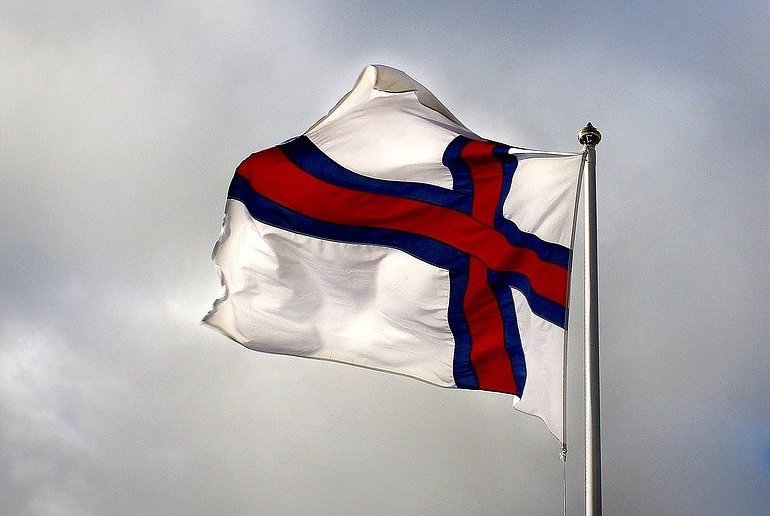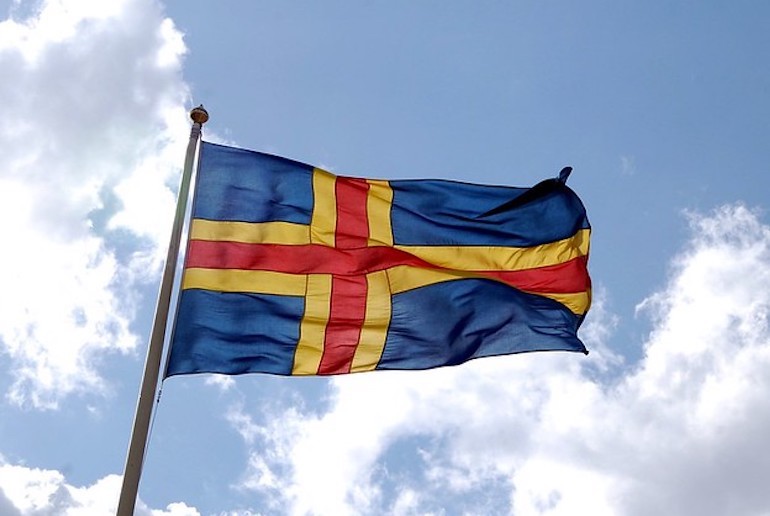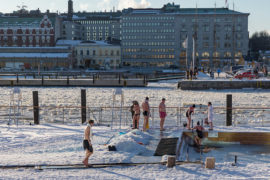Can you tell a Norwegian ensign from a Finnish flag? And have you ever wondered why all Nordic flags have crosses?
It’s true that the flags of Scandinavia have certain similarities, but they also have very distinct differences too. And each county is very proud of its own flag, as you can often tell when travelling in Scandinavia – you’ll see national flags pretty much wherever you go!
Here’s all you need to know about the national flags of Scandinavia.

Why are Scandinavian flags so similar?
Well, the main similarity you’ll notice is that there’s a cross on most Scandinavian flags, and that it’s slightly off-centre. This is called the Nordic Cross and it has Christian origins. Denmark was the first of the Scandinavian nations to adopt Christianity and to use the cross for its flag.
Another thing that the Scandinavian flags have in common is that they all use strong, simple symbols and bright bold colours, which not only appealing to look at, but perhaps provide early evidence of those Scandi design credentials.
The designs and colours are so popular that plenty of Scandi brands incorporate the flags into their products – from baggage labels with Scandinavian flags on them, to bags, hats and other items of clothing.
So why do Scandinavian flags have crosses?
Denmark first displayed the Nordic Cross on its flag as far back as the thirteenth century to reflect its adoption of Christianity. In the fourteenth century, Denmark, Sweden and Norway all united under a single ruler to become the Kalmar Union.
Although there’s no remaining visual proof, the flag of the Kalmar Union is thought to be a red off-centre cross on a yellow background. Once the Kalmar Union was dissolved, the other Scandinavian countries adopted this cross for their own national flags, but in different colours.
Flags of Scandinavian nations
Although the flags of the countries in Scandinavia are quite similar in that they all depict the Nordic Cross, they were adopted at different times and all have their own different colours and varied histories. So here’s a brief guide to the history of the flags of Scandinavia.
Sweden
The Swedish flag is a gold cross on a blue background, which are the colours of the Swedish royal coat of arms.

Legend has it that these colours derive from King Eric IX, who went to Finland on the first Swedish Crusade in 1157, and saw a vision of a golden cross against a blue sky. He was so overcome that he adopted the image and colour for own banner.
A similar flag is thought to date from the sixteenth century, but it wasn’t until 22nd June 1906 that it officially became Sweden’s state and civil flag.
Denmark
With a white cross on a red background, Denmark’s flag is known as the Danneborg, or “Danish cloth”.

While other countries may debate the point, Denmark’s flag is widely considered to be the oldest flag in the world in continuous use – and is recognised as such by the Guinness Book of Records.
Although the flag itself dates from the thirteenth-century, it was officially recognised as Denmark’s national flag in 1625.
Norway
Norway’s flag has rather a smart blue cross with a white outline against a red background. It was designed by an MP, Frederik Melzer in 1821 but wasn’t officially flown as the national flag until 1899 when Norway’s union with Sweden was dissolved.

Norway’s flag is also known as the mother of all flags, because it has the unusual distinction of containing the flags of several other countries within it, including Finland, Netherlands, Poland, Thailand, France and Indonesia.
Can you work out where they all appear? If you need some help, check out the video below.
Finland
The Finnish flag has a blue cross on a white background which represents the blue of Finland’s many lakes and the sky, and the white of the snow.

It was designed by Finnish artists Eero Snellman and Bruno Tuukkane, after Finland gained independence from Russia in 1917 and originally also contained a crown and a coat of arms. These were subsequently removed and the current version officially became the state flag of Finland in 1978.
Iceland
The Icelandic flag has a red cross with a white outline on a blue background. It represents the three main natural elements of Iceland – red for the fiery volcanoes, white for the snow and ice that cover the island for much of the year, while blue represents the mountains.

Since Iceland didn’t gain independence from Denmark until 1944, its flag is relatively new. The Danes allowed Iceland its own flag in the early 20th century on the condition that it should be flown beneath the Danish flag and should incorporate the red of the Danish flag.
When Iceland became an independent republic in 1944, the flag become a darker blue and was flown widely and proudly throughout the entire country.
Regional flags of Scandinavia
And there are several distinct regions of Scandinavia that have their flags, most based on the Nordic Cross too.
Faroe Islands
Although part of the kingdom of Denmark, the Faroe Islands are a self-governing and semi-autonomous archipelago that lies between Norway, Iceland and Scotland.

Its flag has a red cross with a blue outline on a white background, and was designed in 1919 by Jen Oliver Linsberg. However it wasn’t recognised by the Danish government as the Faroe Islands’ national flag until 1948, when the archipelago became self-governing.
Greenland
Another semi-autonomous island of Denmark, Greenland is the only Scandinavian region whose flag does not feature the Nordic Cross.
Although in the red and white colours of Denmark, it features a red semi-circle against a white background in the top half of the flag and a white semi-circle against a red background in the bottom half.

The idea of its own flag was mooted in 1978, when Greenland gained home rule from Denmark, but it wasn’t until 1st May 1989 that the current flag, designed by native Greenlander Thue Christiansen, was adopted.
Åland Islands
Halfway between Finland and Sweden, the Åland Islands are an autonomous Finnish archipelago, whose official language is Swedish – confusing, huh?

Their flag is nearer to the Swedish one in appearance, perhaps to symbolise the islanders’ close links to Sweden. Officially adopted in 1954, it’s a red cross, with a yellow outline on a blue background.
Skåne
The Swedish region of Skåne sees itself as separate from the rest of the country, so much so that it has its own flag – a yellow cross on a red background.
And it’s true that the southernmost part of Sweden was once ruled by Denmark, has strong geographical links to Denmark – and even boasts a bridge from Skane’s capital Malmo to the Danish capital Copenhagen.

So it’s not surprising that the region claims it own identity, independent from the rest of Sweden. Skåne’s flag was designed in the early twentieth century, but not officially adopted until 1999.
Sami flag
The Sami people of Lapland also have their own flag, which was officially adopted in 1992 and can often be seen flying in the northern reaches of Sweden, Norway and Finland.

Designed by Astrid Båhl, the flag is red, green, yellow and blue with a red half-circle representing the sun and a blue semi-circle representing the moon. The background colours symbolise the Sami national costume, with green representing nature, blue the sea, red fire, and yellow the sun.
See also:
A quick guide to Scandinavian countries
The best places to visit in Scandinavia
12 of the best places to stay in Scandinavia










Thanks for the information! This was really interesting to learn about the origins and symbols. My son enjoyed it too!